Found: An Ancient Roman Comic Strip With Speech Bubbles
“Alas for me! I am dead!”
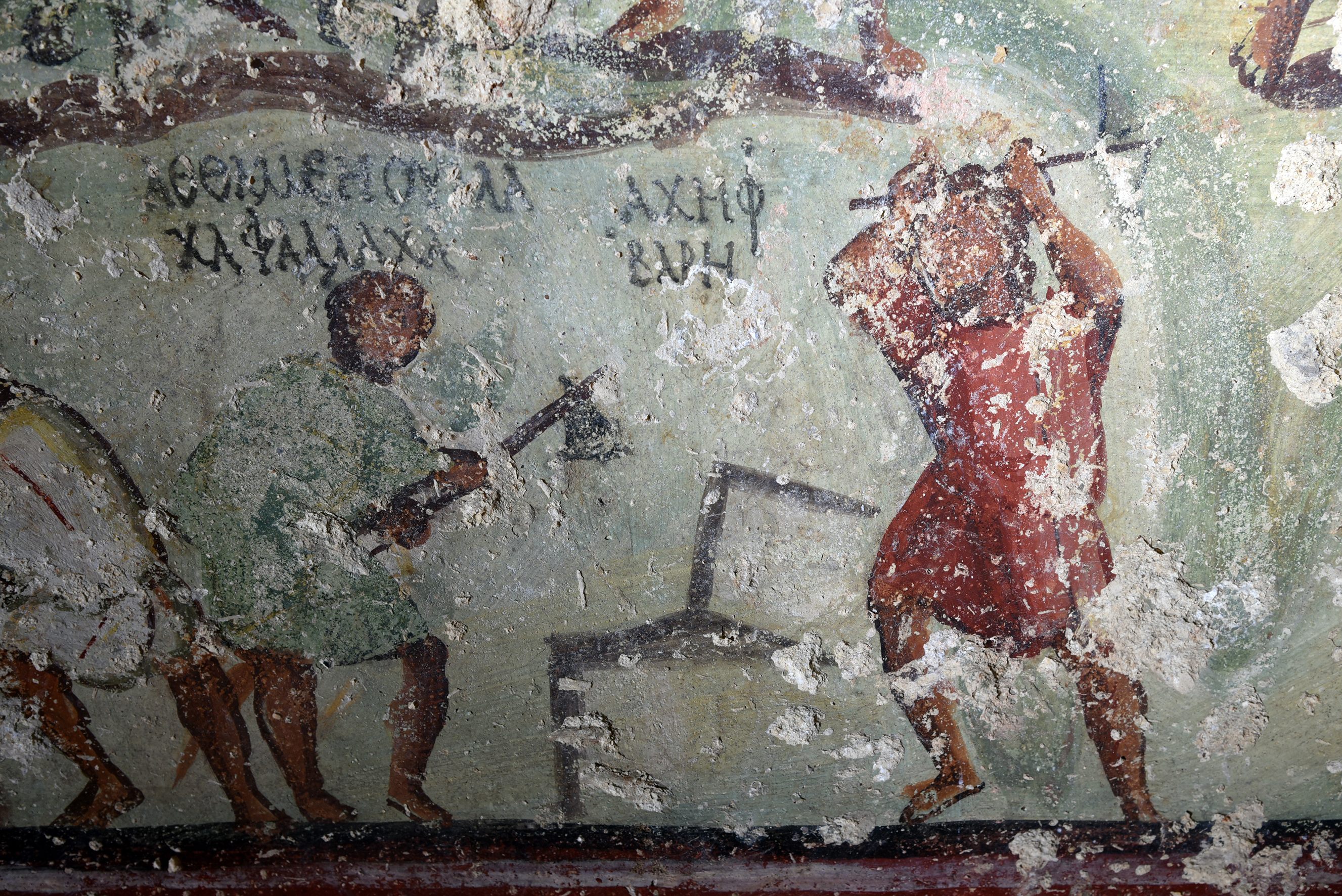
Just think what Virgil, Ovid, or Horace could have done with Superman. A recently unearthed Roman tomb in the northern Jordanian town of Beit Ras features a collection of striking, sequential paintings complete with speech-filled captions, forming what looks to many like an ancient, proto-comic strip.
The hypogeum, or underground tomb, measures an impressive 550 square feet and holds two separate funeral chambers. The main room is adorned with four paintings that, together, depict nearly 260 gods, humans, and animals. It’s important to note the order: In the central painting, an officiant makes a sacrifice to the patron deities of Capitolias (present-day Beit Ras) and Caesarea Maritima, capital of the province Judea. A second painting features peasants working the fields with oxen and chopping down trees with help from the gods, the third painting renders the construction of a rampart (with some of the workers even getting into accidents as they climb walls or cut stones), and the fourth illustrates a priest making another sacrifice to those deities.
Researchers believe that the paintings—and their arrangement—tell a story about the founding of Capitolias. First, a priest turns to the gods for advice on where to establish the city, workers then develop the land and raise defenses, and the community finally offers its thanks with another sacrifice when the work is done. In a release, researchers called the tomb’s decorations unusually ornate.
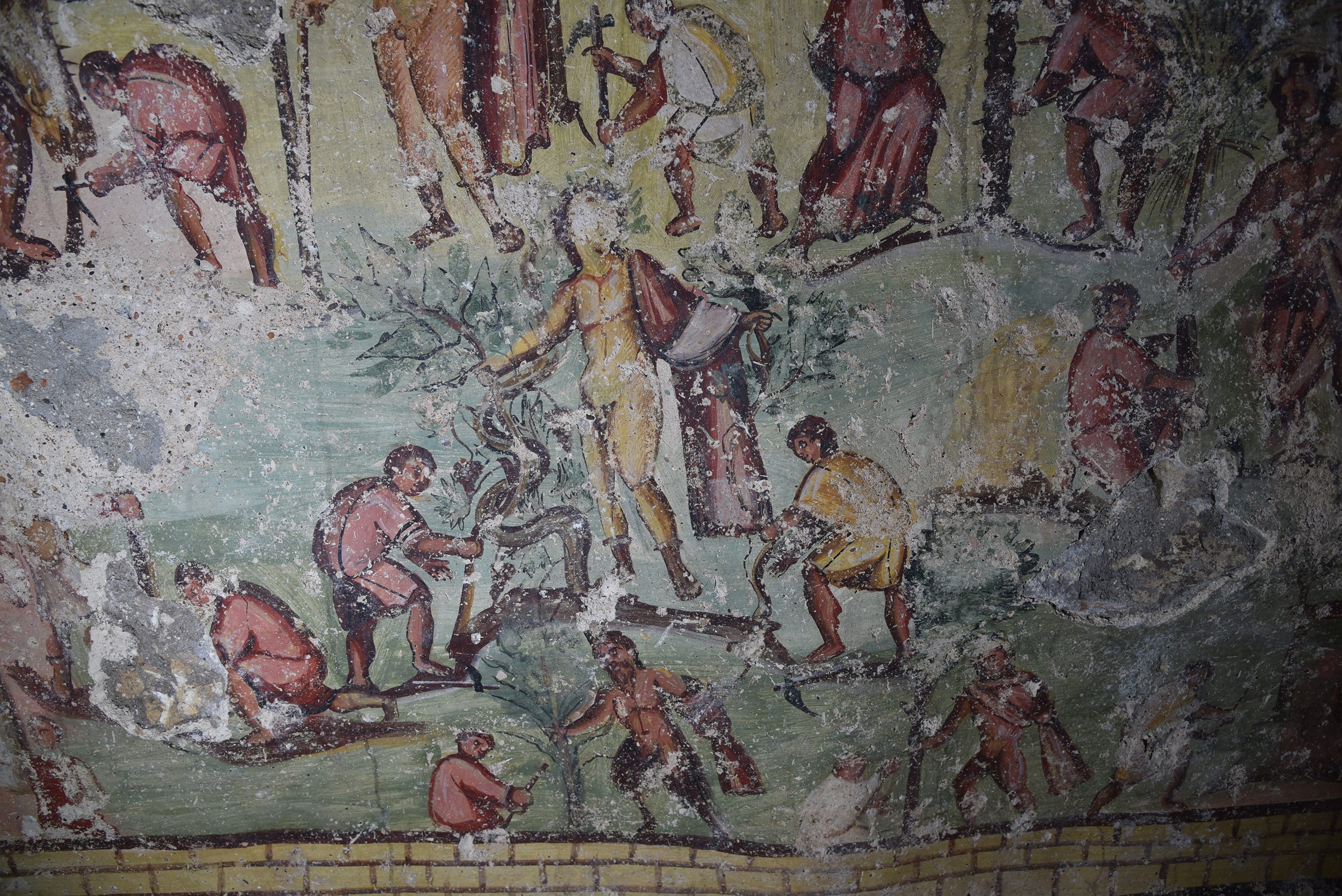
The most exciting aspect of the discovery, however, may be the text that accompanies these images. More than sixty inscriptions explain the action, like speech bubbles that give direct voice to the characters on the walls. It’s not exactly Alan Moore—“Alas for me! I am dead!”—but the inscriptions promise interesting research. Most are written in Aramaic but with Greek letters, merging the two primary languages of the Roman Middle East, but it’s more complicated than that. The inscriptions attached to the deities are written in Greek alone, which distinguishes them from the hybrid text of the toiling peons.
Capitolias belonged to a part of the Roman Empire known as the Decapolis, a group of 10 cities that retained the legacy of Hellenistic culture and enjoyed relative autonomy from the empire. There’s no shortage of Roman artifacts in the Beit Ras area, but this find was pure serendipity. It was uncovered by routine roadwork outside a school in 2016.
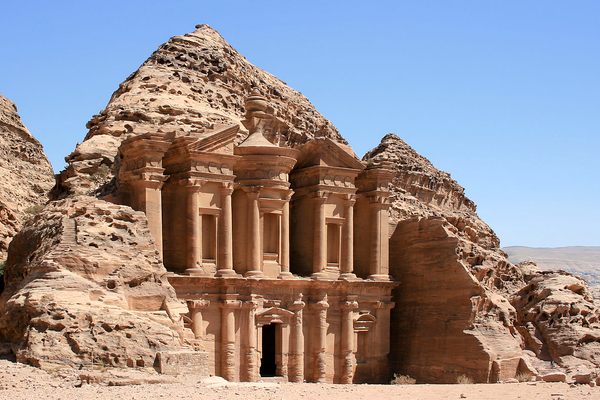

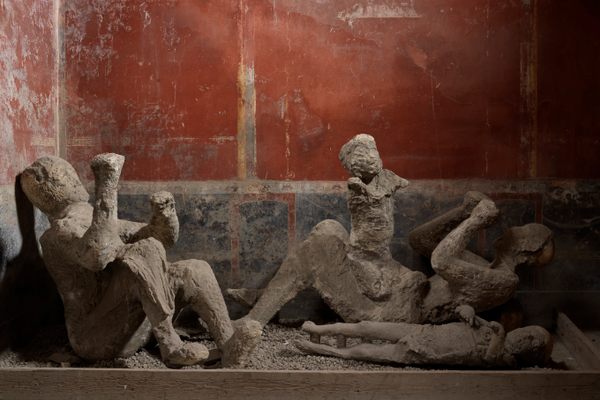

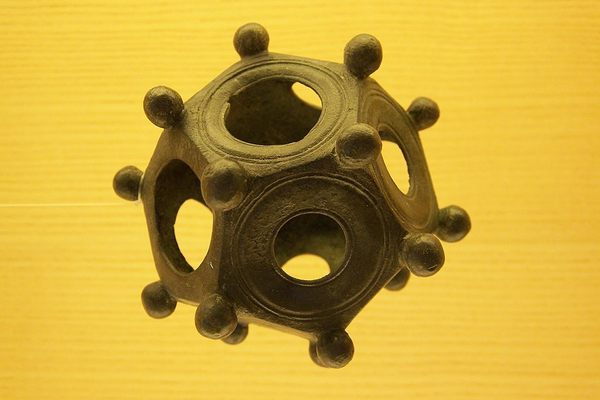
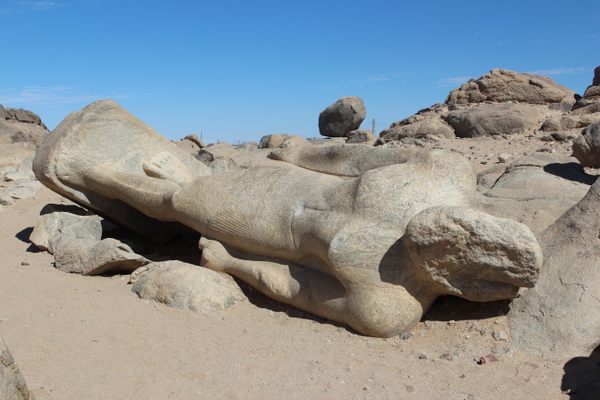







Follow us on Twitter to get the latest on the world's hidden wonders.
Like us on Facebook to get the latest on the world's hidden wonders.
Follow us on Twitter Like us on Facebook